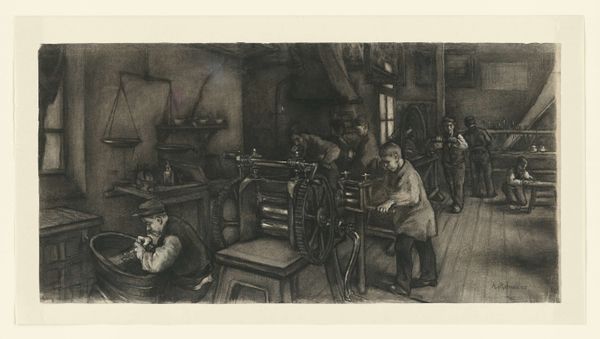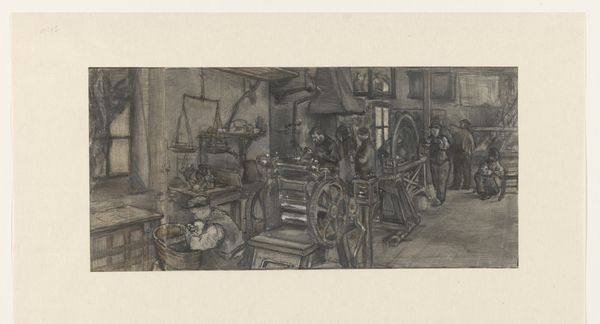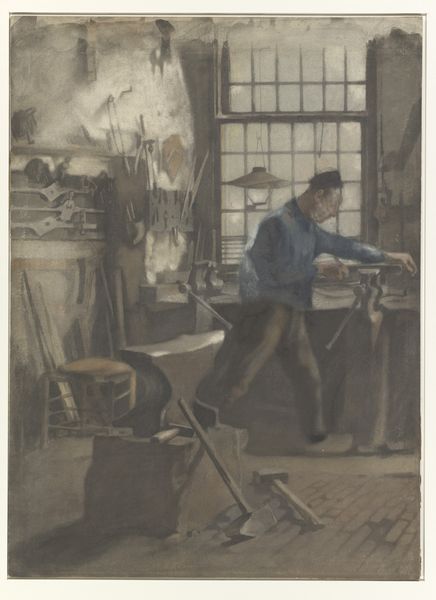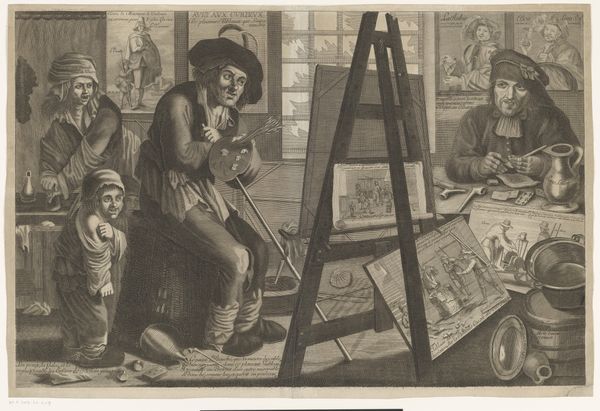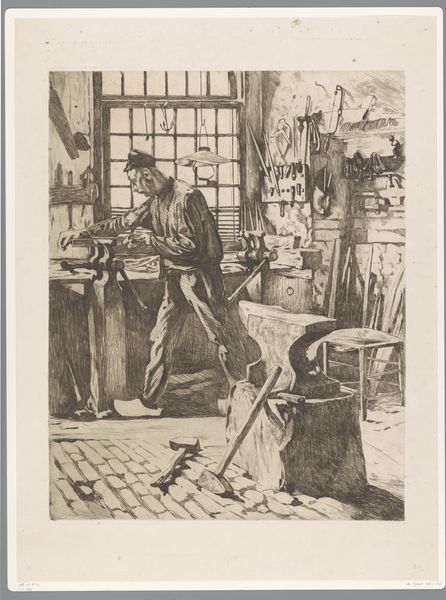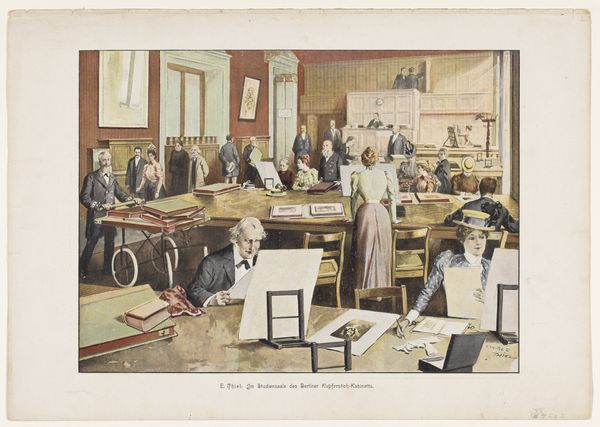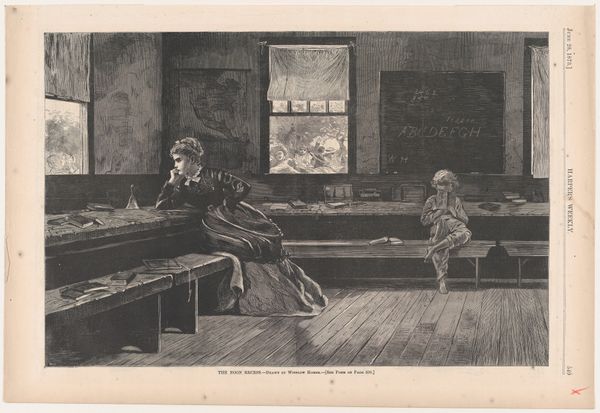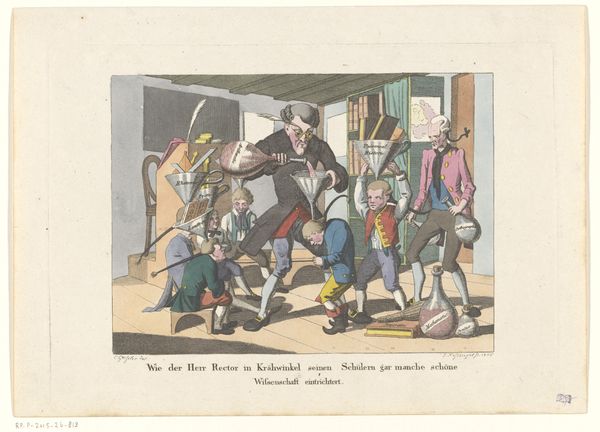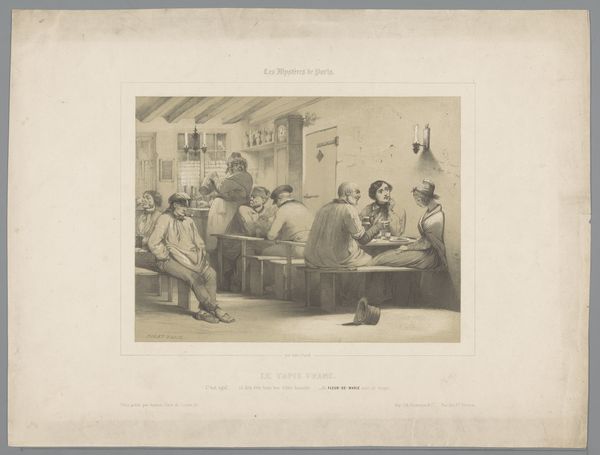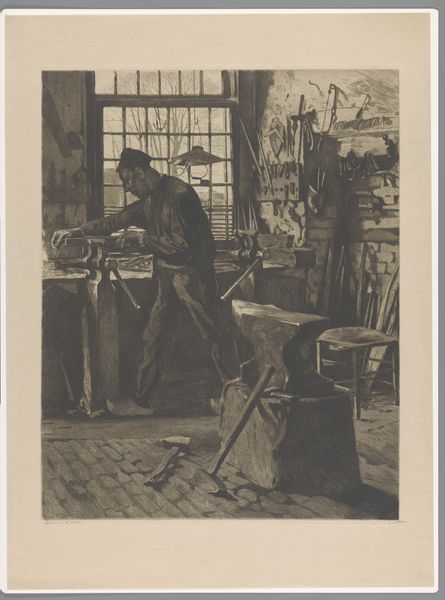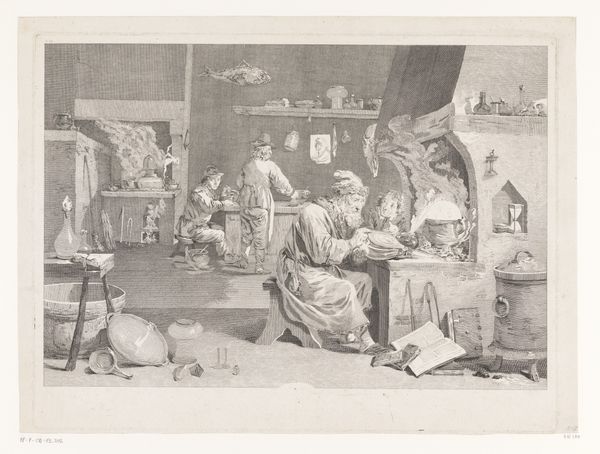
print, engraving
#
dutch-golden-age
# print
#
group-portraits
#
genre-painting
#
history-painting
#
engraving
Dimensions: height 319 mm, width 412 mm
Copyright: Rijks Museum: Open Domain
Curator: Immediately, I'm struck by the density of this composition, the organized chaos within the implied grid. All of the figures within contribute to the intricate narrative with clearly delineated shapes. Editor: Indeed. This engraving, "Boekbinderij," from 1875 depicts a bookbinding workshop teeming with activity. Its anonymous authorship places it squarely within a specific context of mass production and perhaps a collective, rather than individual, artistic vision. Notice how the industrial labor on display romanticizes pre-industrialized means of manufacturing as compared to the increasing influence of large-scale factories and companies on communities in that era. Curator: I observe a definite hierarchy in the visual plane. The figures closer to the picture plane are rendered with greater detail and dynamism. The engraver employs strong diagonal lines to pull the eye through the complex space, a technique which emphasizes labor through linear precision. It also showcases depth. Editor: And consider the socio-economic implications! Workshops such as these, especially during the late 19th century, were critical not only for producing printed materials but also as potential hubs of radical or progressive social reform. Books were seen as powerful objects of influence; in order to manufacture them at that time would also imply agency as it pertains to the proliferation of counter-cultural political awareness or popular opinions. Curator: You highlight an interesting aspect of access to information during that period. Thinking purely aesthetically, one might posit that the warm color palette is juxtaposed intentionally against the cold machinery, thus rendering an idyllic perception of a potentially strenuous manual labor environment. Editor: A point well taken, perhaps serving to offset or perhaps even counteract the very real-world challenges of labor during this industrial era. What stories these walls could tell. Curator: Exactly. As we pull our focus back from the immediate details, we see a unified composition carefully planned out by the engraver's deft hand and eye. I encourage all who view it to examine it through those principles as well! Editor: This peek into a bookbinding workshop serves as an example of an era that helped spread awareness as to the challenges to everyday life through a shift to mechanized industry, ultimately defining the complex socio-political ecosystem. Hopefully listeners walk away knowing the rich legacy this engraving invokes in our public memory.
Comments
No comments
Be the first to comment and join the conversation on the ultimate creative platform.

